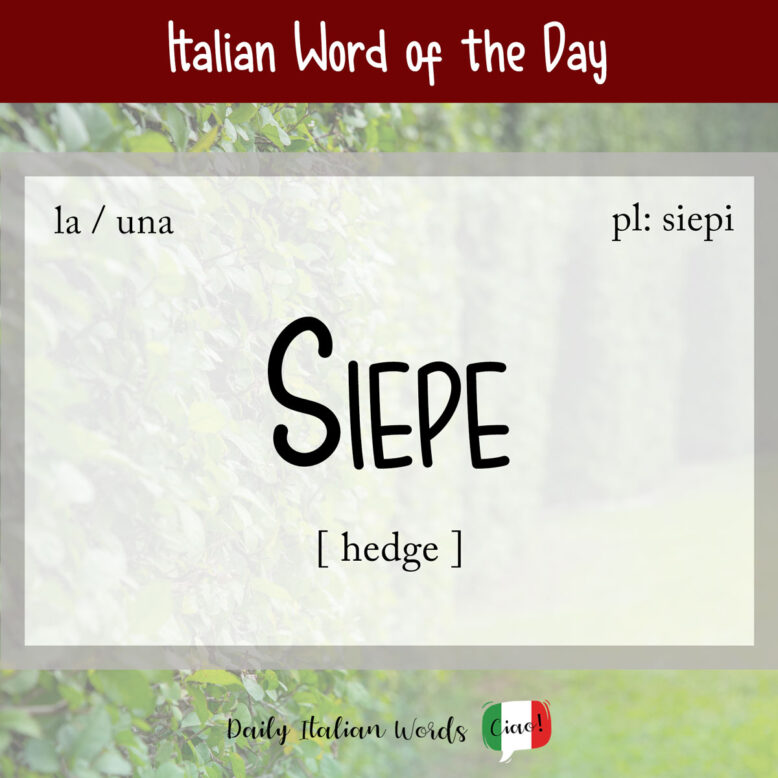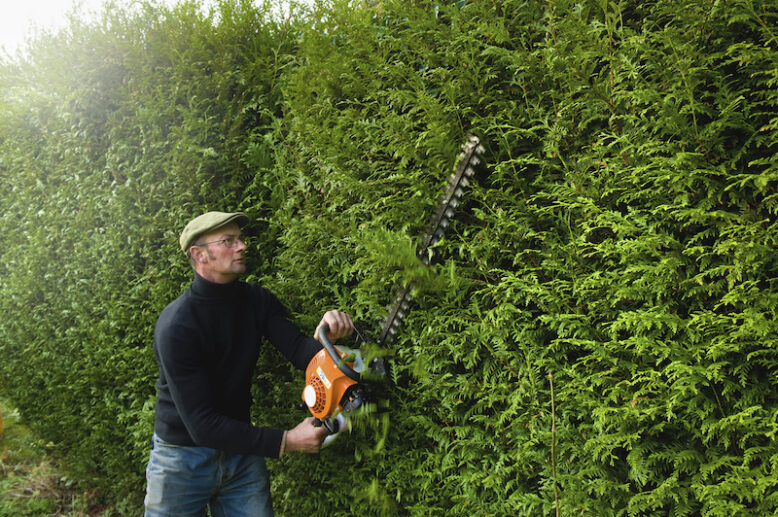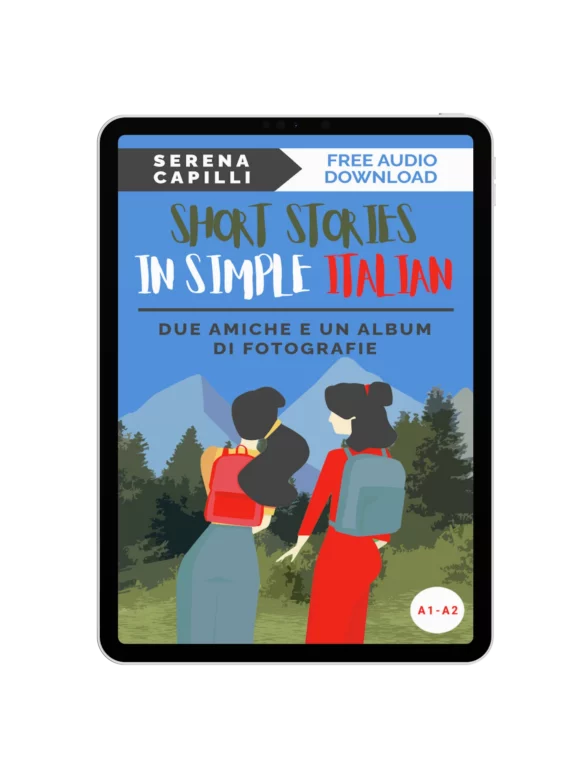The word for a boundary formed by closely grown bushes or shrubs is known as a siepe in Italian. It derives from the Latin word saepes.
siepe
hedge

Siepe is a feminine noun, and its plural is siepi.
la siepe
una siepe
le siepi
delle siepi
Some different kinds of hedges include:
- siepe viva = living fence
- siepe morta = dead hedge
- siepe di bosso = box hedge
- siepe di confine = fencing hedge
Abita in una villa circondata da una siepe molto alta.
She lives in a villa surrounded by a tall hedge.

Figuratively speaking, siepe is also the term for a large group of people who form a barrier with their bodies. In older texts, you may come across the now rarely used expression fare siepe which means to form a barrier.
Una siepe di poliziotti sbarrava la strada ai manifestanti.
A line of policemen blocked the road so that the protesters could not pass.
In the world of horse racing, another meaning for siepe is hurdle or fence, although the words ostacolo (obstacle) and barriera (barrier) are also used.
Heather Broster is a graduate with honours in linguistics from the University of Western Ontario. She is an aspiring polyglot, proficient in English and Italian, as well as Japanese, Welsh, and French to varying degrees of fluency. Originally from Toronto, Heather has resided in various countries, notably Italy for a period of six years. Her primary focus lies in the fields of language acquisition, education, and bilingual instruction.


